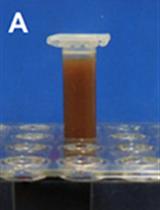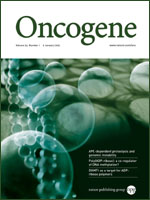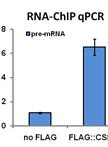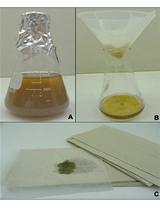- EN - English
- CN - 中文
p65 Chromatin Immunoprecipitation Protocol
p65染色质免疫共沉淀法
发布: 2013年04月20日第3卷第8期 DOI: 10.21769/BioProtoc.683 浏览次数: 12538
评审: Lin Fang

相关实验方案

体内使用DNA结合分子介导染色质免疫沉淀法(enChIP)对于与目的基因组相互作用的蛋白质进行识别
Toshitsugu Fujita and Hodaka Fujii
2014年05月20日 15411 阅读
Abstract
Chromatin Immunoprecipitation (ChIP) is an important procedure that allows you to verify if a certain protein is physically located at a regulatory region. This information, taken together with other procedures such as luciferase assays and EMSAs, will give definitive proof that the query protein is involved in the transcription of a protein. This procedure for p65 ChIP can be adapted to investigate other proteins; just a change of the antibody will suffice.
The transcription factor known as NF-κB is a homo- or hetero-dimer consisting of members of the Rel/NFKB family. The most abundant NF-κB complexes are made of two different proteins, p65 (Rel-A) and p50 (NFKB1). The NF-κB complex is initially inhibited by IκB by direct binding, thus trapping NF-κB in the cytoplasm. After a stimulatory signal, IκB kinase (IKK) phosphorylates IκB, allowing IκB to undergo proteasome-mediated degradation. The degradation of IκB and phosphorylation of p65 by multiple kinases activates NF-κB, allowing it to transport to the nucleus and cause the transcriptional activation of many of its target genes containing κB sites (consensus sequence: gggRNNYYcc, R = purine Y = pyrimidine), such as PUMA, IL-6, and TNF.
Materials and Reagents
- HCT116 cell line
- Trypsin (0.05%) (Life Technologies, catalog number: 25300-054 )
- DMSO
- PBS
- Formaldehyde (J.T. Baker, catalog number: 2106-01 )
- 1 M Glycine
- Liquid nitrogen or a dry ice/100% ethanol
- NP-40
- Protease inhibitor cocktail tablet (F. Hoffmann-La Roche, catalog number: 04-693159-001 )
- p65 antibody (Santa Cruz, catalog number: sc-109 )
- Chromatin Immunoprecipitation Assay Kit (EMD Millipore, catalog number: 17-295) online at: http://www.millipore.com/coa.nsf/a73664f9f981af8c852569b9005b4eee/20c0dc520d2b30f0852573be007ffdae/$FILE/17-295-DAM1411265.pdf
- Protein A/G PLUS-agarose (has been preblocked with BSA) (Santa Cruz, catalog number: sc-2003 )
- Phenol
- Chloroform
- Glycogen
- 70% ethanol
- SDS
- Triton X-100
- EDTA
- Tris-HCl
- NaCl
- NaHCO3
- EBC buffer (see Recipes)
- ChIP dilution buffer (see Recipes)
- 10x protease inhibitor solution (see Recipes)
- Low salt immune complex wash buffer (see Recipes)
- High salt immune complex wash buffer (see Recipes)
- LiCl immune complex wash buffer (see Recipes)
- TE buffer (see Recipes)
- Elution buffer (see Recipes)
Equipment
- Sonicator (Branson Digital Sonifier 450) (Branson Ultrasonics Corp)
- Centrifuge
- 15 ml conical tubes
- T75 flasks
- Cell scrapers
Procedure
文章信息
版权信息
© 2013 The Authors; exclusive licensee Bio-protocol LLC.
如何引用
Dudgeon, C. R. (2013). p65 Chromatin Immunoprecipitation Protocol. Bio-protocol 3(8): e683. DOI: 10.21769/BioProtoc.683.
分类
分子生物学 > DNA > DNA-蛋白质相互作用
生物化学 > 蛋白质 > 免疫检测 > 染色质免疫共沉淀(ChIP)
您对这篇实验方法有问题吗?
在此处发布您的问题,我们将邀请本文作者来回答。同时,我们会将您的问题发布到Bio-protocol Exchange,以便寻求社区成员的帮助。
Share
Bluesky
X
Copy link











